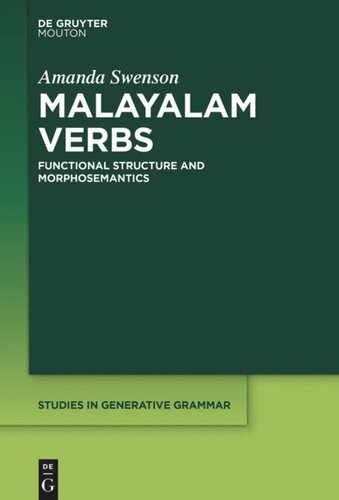

Most ebook files are in PDF format, so you can easily read them using various software such as Foxit Reader or directly on the Google Chrome browser.
Some ebook files are released by publishers in other formats such as .awz, .mobi, .epub, .fb2, etc. You may need to install specific software to read these formats on mobile/PC, such as Calibre.
Please read the tutorial at this link: https://ebookbell.com/faq
We offer FREE conversion to the popular formats you request; however, this may take some time. Therefore, right after payment, please email us, and we will try to provide the service as quickly as possible.
For some exceptional file formats or broken links (if any), please refrain from opening any disputes. Instead, email us first, and we will try to assist within a maximum of 6 hours.
EbookBell Team

5.0
80 reviewsThis book, using Malayalam as a case study, provides an in-depth exploration of how inflectional suffixes should be separated from the verb and the implications this has for the syntax and semantics. Past work has proposed that Malayalam lacks a Tense Phrase and tense morphology, i.e. is ‘tenseless’. However, this book shows that Malayalam behaves differently from other tenseless languages and that it does have tense morphology. It also provides evidence that there is a Tense Phrase in the syntax. In addition, it examines what have been called the two 'imperfectives' and argues that one is a type of progressive, while the other is a pluractional marker and shows that Malayalam lacks perfect morphology and a Perfect Phrase in, minimally, Universal perfects. With respect to finiteness, among other things, it argues that Conjunctive Participles are best analyzed as a type of absolutive adjunct and that -athu ‘gerunds’ involve nominalization above the Tense Phrase-level. This book will be a valuable resource for anyone interested in cross-linguistic variation in Tense-Aspect-Modality and/or the morphosyntax or morphosemantics of Dravidian languages.